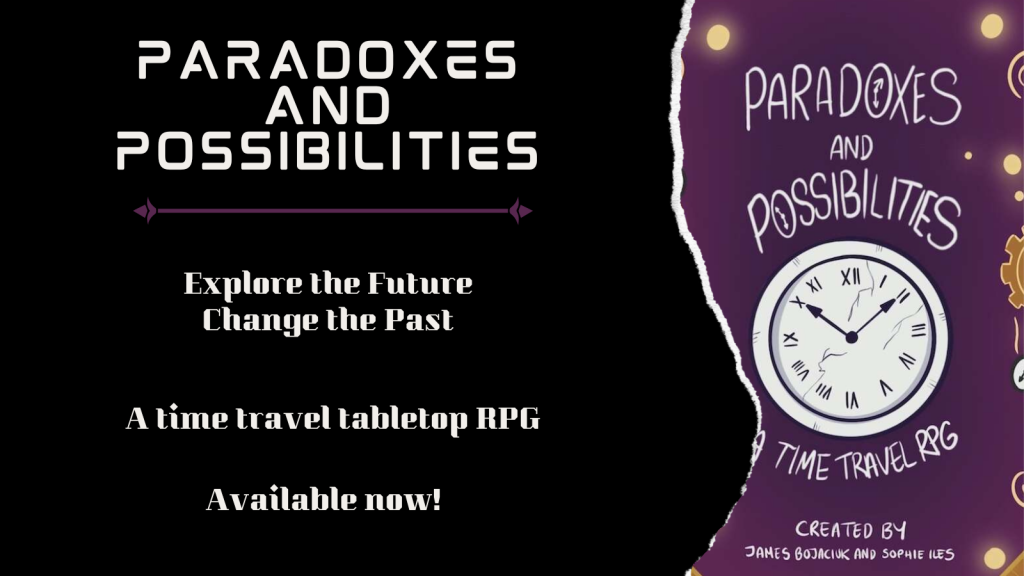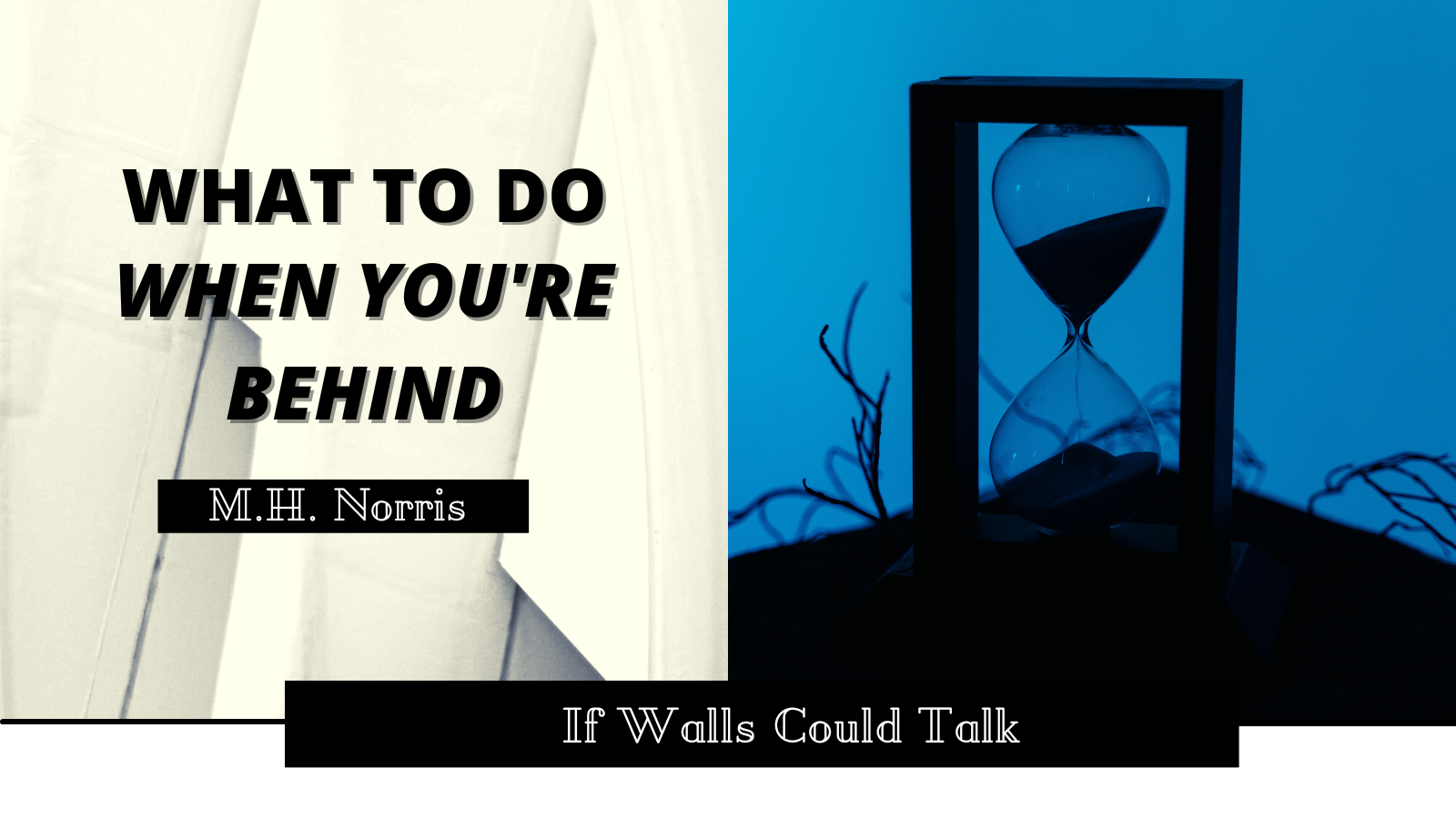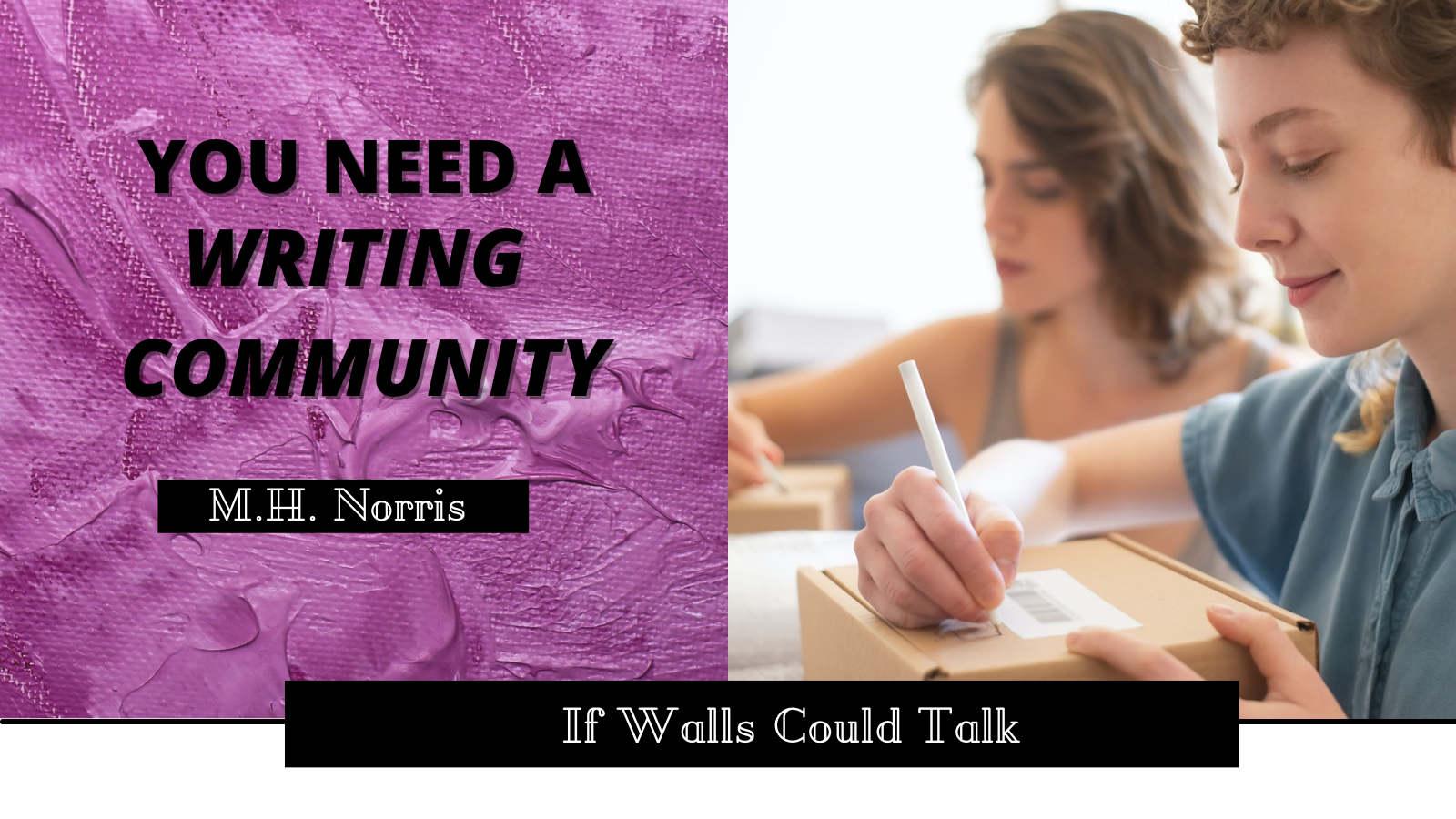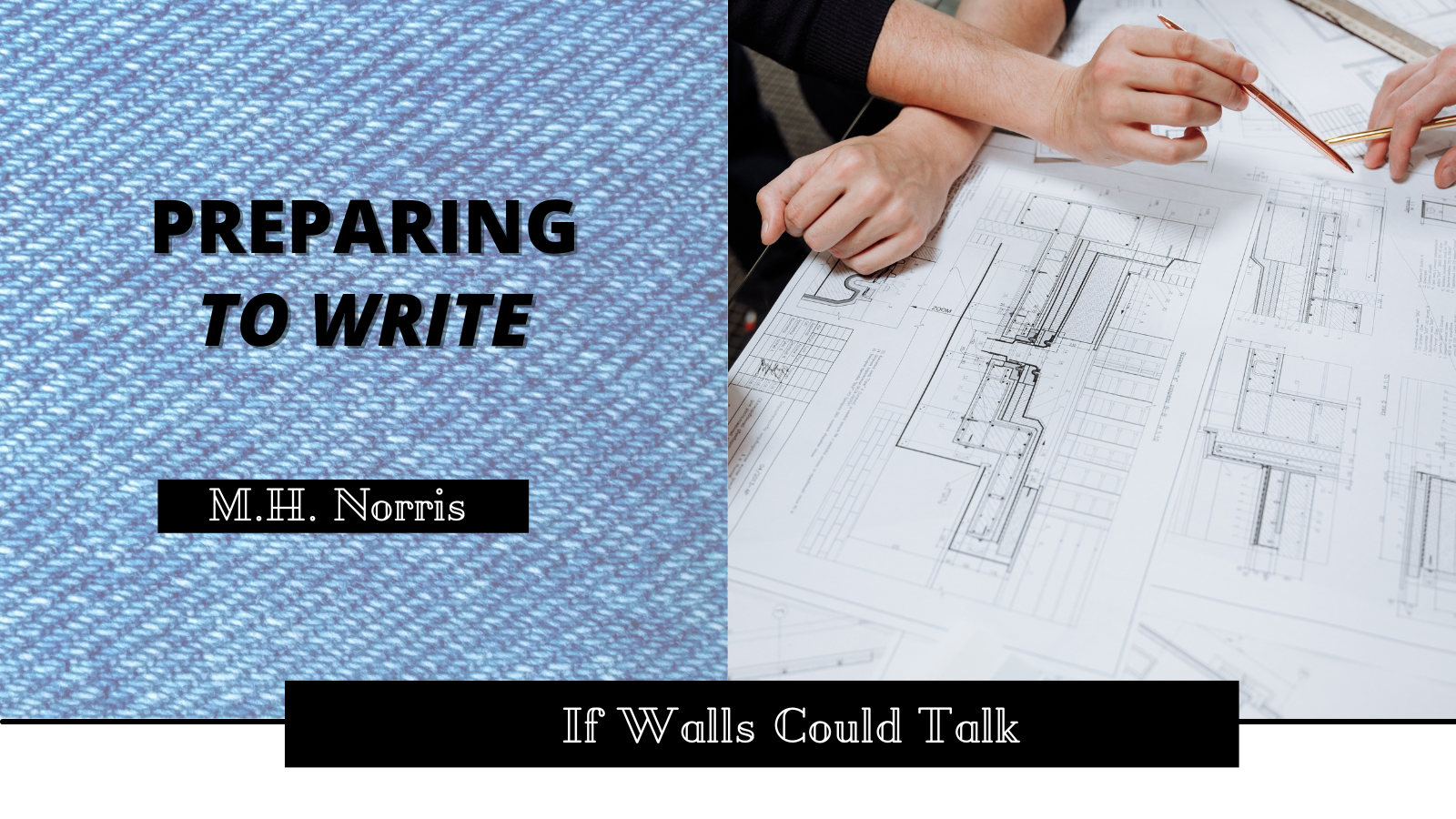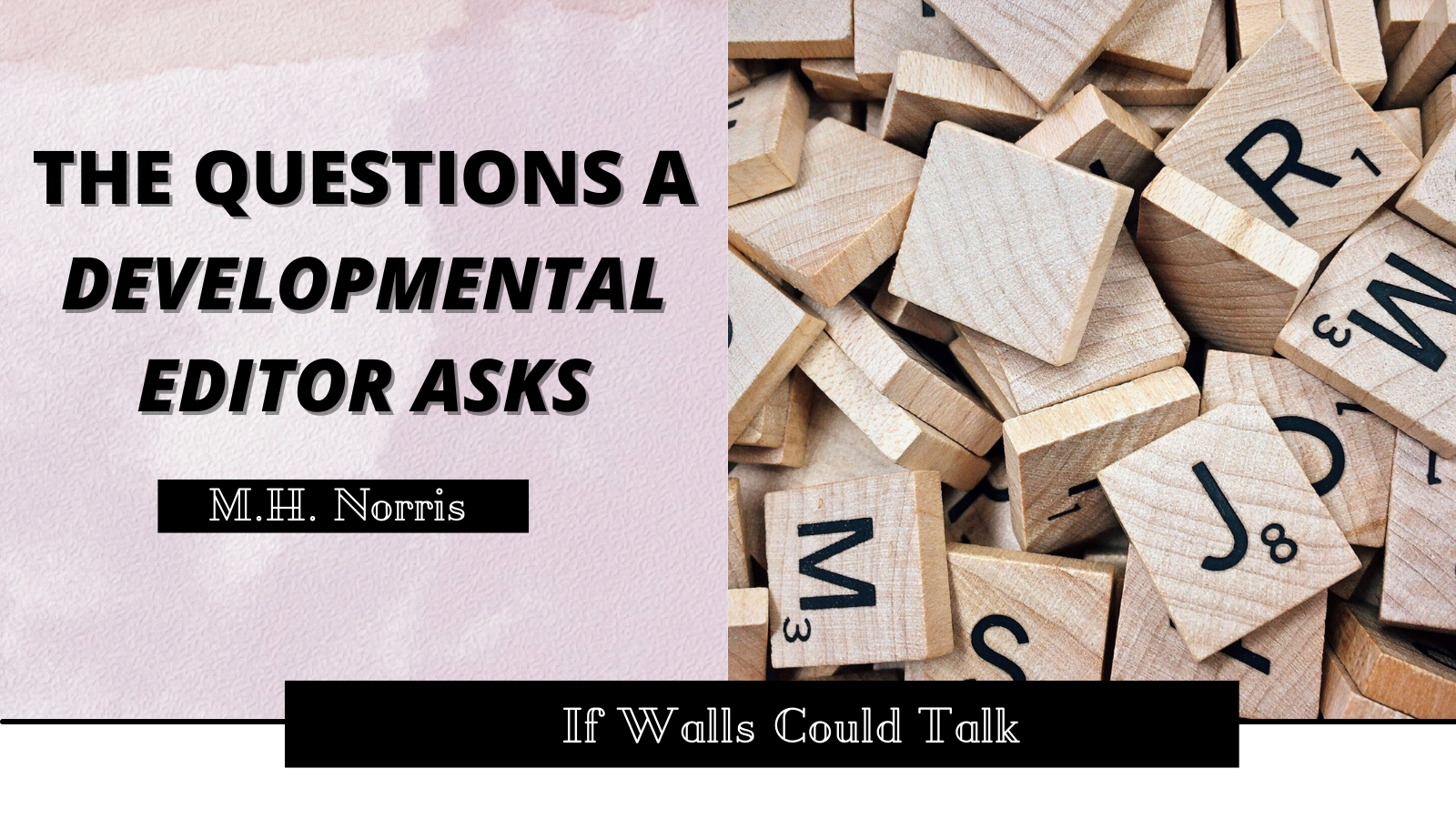
If Walls Could Talk: The Questions a Developmental Editor Asks
A few weeks ago, I wrote about one of the most important parts of the writing process. I explored many of the common kinds of editing you’ll find editors or publishers use, but I described one in passing. I said it’d be the topic of another article another day – and that day is today.
Let’s talk about Developmental Editing. It’s my favorite stage of the process.
Last time I said…
Developmental editors help you get into your story and make it the best it can be. They will help you figure out your characters and their arcs, and help your plot become cohesive and sing.
A good developmental editor supports you. They’ll work to make sure your work is still your own. They’re there to give you paths to go down, and make sure you consider the best alternatives. They’ll be your sounding board, and they’ll give you options. They won’t dictate your characters and world, and they won’t make your story conform to their vision.
This is only the first article where I’ll be talking about developmental editing. It’s an area that isn’t well understood, and you can easily find contradictory or incorrect information about it.
Because this is so different from copyediting or proofreading, I want to start discussing this in a different way:
What goes through the head of a developmental editor when they first read a piece? How do they start to help an author?
What does a developmental editor ask themselves as they start to work?
Does this piece meet the requirements?
On behalf of editors everywhere, I make a simple request.
Read
Submission
Guidelines
Before
You
Submit
If you’re sitting here wondering why I feel the need to state something that may seem obvious, then you are doing it correctly.
The quickest way to get a rejection letter is to ignore submission guidelines. Trust me, when I say, as editors, we didn’t create those for our health.
About half of the submissions I got for All The Petty Myths did not follow the guidelines. On the one hand, it made it easier for me to make decisions. On the other, it was frustrating. If they had followed the guidelines and either written toward it or had sent a different trunk story, they could have been accepted.
If you’ve been commissioned, please look at the guidelines (or communication you’ve had with your editor) one more time. Make sure you’re meeting the expectations set for you. Look over any outlines you wrote and make sure you included all of the events; make sure that in the act of writing it, you didn’t follow a rabbit trail.
This is another way of saying that editing is a two way street. You need to make sure that you and your editor are in agreement about your piece. If you send them something completely different than discussed, they won’t be able to properly help you and your work.
What is the goal of this piece?
Every piece you write has a goal.
For example, as a mystery writer, my goal is to set up a case and then walk you to its conclusion. You’ll need to see the clues (even if you don’t realize it), and follow the detective’s thoughts and processes. You need to understand how and why the crime was committed.
Every genre has different goals, and different elements that need to be included to work toward those goals. From there, each individual story emphasizes or ignores part of the genre’s goals in pursuing their own unique story. In Midnight, for example, we spend more time learning Rosella’s unusual approach than would be needed in, for example, a noir story.
For articles, it depends on the type. An investigative journalist lays the clues they found and path they took so the reader reaches the same conclusions. A travel reporter conveys what it’s like to visit a place that the reader might not ever have the chance to, and give them a piece of that experience.
Because of their different goals, these two pieces will be written in different ways.
When I approach writing If Walls Could Talk, I look at what I’ve been up to in my writing. Some weeks that’s harder than others, especially when it’s not a productive week for me. To be honest, this week’s post was one I had on a list of potential topic ideas. Some weeks my goal is to explain part of the concrete writing process, while other weeks I’m talking about where I am with my writing. Those articles look very different from each other. Writing a list in almost every column has benefits. It helps me stay on topic and make sure I provide you with the best information I have on that particular sub-topic. But that doesn’t work for every article.
If a piece lacks a specific goal, it’s obvious. It’s aimless, rambling, and wanders all over the place.
As an editor, this is the first thing I look at when editing a piece. I want to see if the writer knows where this piece was supposed to go. If a story or article is aimless, it’ll certainly need another draft before I can truly dig in.
Does this piece make sense?
Sadly, this is a necessary question to ask. I have seen submitted pieces that I could not follow sentence to sentence. But I’ve also seen stories destroyed by out of left field final twists, or character choices that did not work within the story. I’ve read articles where a missing piece of information makes it seem contradictory.
This is a great place to ask for help from a beta reader. It’s easy to get lost in our own heads and not realize we’ve left important details (often character motivations, I’ve found) off the page. Getting help from someone who hasn’t been as close to a story as you can make a huge difference.
Is it appropriate for the audience?
To my surprise, a friend ran into this recently.
Running a community film festival, they were presented with a short film. It became a question of if it could or should be screened at all. They had to decide if it was inappropriate, or just against their own morals. Writers and creators don’t have to agree on everything to respect each other’s art.
But it’s not always about morals. Sometimes it’s just whether or not something fits the target audience. A children’s magazine is not going to accept a news piece on economics. A mystery magazine is not going to accept a high fantasy adventure story. Even within genres a piece may not fit. I know some mystery magazines are a hard sell on cozy stories, for example.
Know your audience. Who are you writing for?
Will they be receptive to what you’re reading? Is it a good fit for them?
Are the characters interesting and consistent? Do they show depth? What can be done to invest the readers in them?
Does the world make sense? Is there enough detail about it? What can be done to make it feel real and draw the reader in?
After all of that, we can dig into the central questions. We can dive into the story itself. This reaches the parts of the process that I’d like to speak about another time, but there are a few more things that go through my head when first looking over a piece: What do I know about the characters and world? If I put on my “reader hat,” do I want to know more about them? Are they vibrant and complex enough to support the piece, and keep readers invested?
This applies just as much to non-fiction. If you’re writing about a real person, are you portraying them accurately? Will readers be interested in them as you’ve presented them? What can you do to invest readers? If you’re writing about a real place, what will suck the reader in and make them want to learn more?
One More Thing
An important question that I save until I know the piece meets requirements: Does the piece have proper structure? Will scenes or character beats need to be moved or changed to make it flow properly, and draw the reader in? This is something else I’ll come back to and continue to refine as we edit.
Then there are other important questions I ask myself. Is the tone consistent? If it is consistent, is the tone right for the piece? If it’s non-fiction, did the author mark their sources?
No More Questions
At the end of all these questions, I’ll know how to help an author make their piece the best it can be.
Like I mentioned a few weeks ago, the editing process is there to make your work better. I spent far too long, in my early days, resenting it. I didn’t understand the value, and I didn’t understand how it helped me grow as a writer. I think it took me stepping behind the editing desk myself to properly appreciate it.
Having that insight on something as important as how your piece works as a whole, and what can be better, is amazing. That outsider perspective is invaluable.
Developmental editing is also a time-consuming process. Part of the reason for that is you can cycle through edits multiple times before you’re done and move on to a line edit. James and I do that all the time. I fix problems and sometimes accidentally create new ones. Or resolving one problem reveals another. Or it takes a few drafts to get it right.
It can be a cycle. It can be time consuming.
But it’s worth it. You, and your writing, grow so much because of it.
That’s one of my favorite things about editing. I love to help people grow as writers (it’s the main reason I write this column every week). Not only do you help them, but they can help you. You learn no matter what side of the editor’s desk you’re facing.
Embrace it. Enjoy it. Learn from it. Grow.
